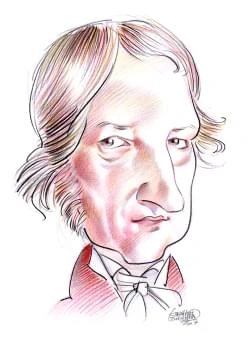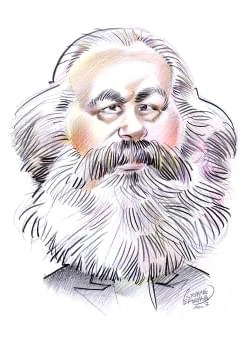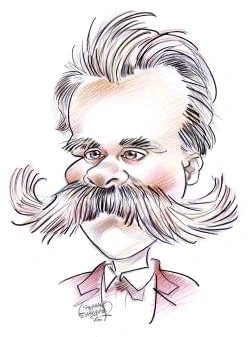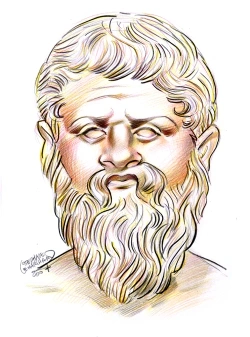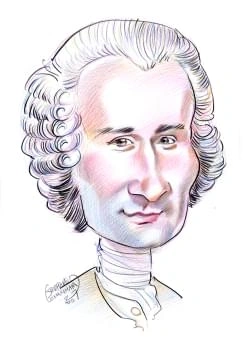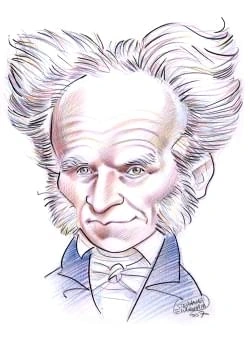29 résultats pour "rawa"
- Ta rawa (seconde guerre mondiale).
-
Turkmenistan - country.
A Ethnic Groups With Turkmens constituting 77 percent of the population, Turkmenistan is the most ethnically homogeneous of the Central Asian republics. Uzbeks make up the largestminority group, with about 9 percent of the population. Other ethnic groups include Russians, Kazakhs, Tatars, Ukrainians, Azeris (ethnic Azerbaijanis), Armenians, andBaluch. In 1993 a bilateral treaty between Turkmenistan and Russia granted dual citizenship to Russians in the republic. At the 1995 census Russians cons...
-
Stone Age.
limestone, quartzite, and indurated shale. Ground stone tools could be made on a wider range of raw material types, including coarser grained rock such as granite. Flaking produces several different types of stone artifacts, which archaeologists look for at prehistoric sites. The parent pieces of rock from which chips have beendetached are called cores, and the chips that have been removed from cores are called flakes. A flake that has had yet smaller flakes removed from one or more edgesin orde...
-
Ghana - country.
times of depressed cacao prices, Ghana has significantly increased exports of timber to generate needed revenue. In 1988 Ghana initiated a conservation plan called the Forest Resource Management Project. In 1989 Ghana restricted the export of 18 tree species, and in 1994 thecountry banned the export of raw logs. About 4.8 percent (1997) of the country’s land is officially protected, but illegal logging threatens Ghana’s remaining forests. Deforestation, overgrazing, and periodic drought have led...
-
Poverty.
economic and demographic trends, and (7) welfare incentives. A Overpopulation Overpopulation, the situation of having large numbers of people with too few resources and too little space, is closely associated with poverty. It can result from highpopulation density (the ratio of people to land area, usually expressed as numbers of persons per square kilometer or square mile) or from low amounts of resources, or from both. Excessively high population densities put stress on available resources....
-
Intelligence.
education. Teachers had no way of knowing which of the “slow” students had true learning problems and which simply had behavioral problems or poor prior education.In 1904 the French Ministry of Public Instruction asked Binet and others to develop a method to objectively identify children who would have difficulty with formaleducation. Objectivity was important so that conclusions about a child’s potential for learning would not be influenced by any biases of the examiner. The governmenthoped tha...
-
World War I .
and troops to Europe from the United States and other overseas sources. In 1914 Britain implemented a sea blockade of Germany to prevent the delivery of importssuch as food and war materials. The same year, Germany began using submarines to disrupt Allied seaborne traffic and prevent supplies from reaching Britain. In 1915Germany instituted a submarine blockade around Britain. From February 1915 to September 1915 and again in 1917, Germany used unrestricted submarine warfare,sinking ships withou...
-
Clams.
You can boil, fry, or steam clams. You can even eat clams raw. Small hard-shell clams called littlenecksand cherrystone clams usually get eaten raw. You only eat the body of the clam, not its shell. You can cook clams to make soup. Clam soup is called clam chowder. Microsoft ® Encarta ® 2009. © 1993-2008 Microsoft Corporation. All rights reserved.
-
-
Detroit - geography.
of German and Irish immigrants. In the first half of the 20th century, the percentage of foreign-born residents declined, even though many immigrants arrived fromeastern Europe. During World War II (1939-1945), both whites and blacks were attracted from the South to work in the city’s defense industries. In 1950 foreign-bornand black residents each made up about 16 percent of the total population. In the five decades after 1950, the city lost almost half of its population, as many white resident...
-
Latvia - country.
The population of Latvia is about 2,245,423 (2008 estimate), yielding an average population density of 35 persons per sq km (91 per sq mi). Latvia is highly urbanized.Some 66 percent of the population lives in urban areas, with nearly one-third of the total population residing in the capital, Rīga. Other important cities includeDaugavpils, an industrial center in the southeast, on the Daugava River; Liep āja, an important port on the Baltic Sea; Jelgava, an industrial center near Rîga; J ūrmala,...
-
Bulgaria - country.
E Climate Most of Bulgaria has a continental climate, with cold winters and hot summers. The climate in general is more severe than in other European areas of the samelatitudes, and the average annual temperature range is greater than that of neighboring countries. Severe droughts, frosts, winds, and hail storms frequently damagecrops. A Mediterranean climate, with dry summers and mild, humid winters, prevails in the valley of the southwestern Rhodope Mountains; the northern limit of theclimati...
-
Communism.
In Britain, Robert Owen, a philanthropic Welsh manufacturer, strove against the social problems brought about by the Industrial Revolution and sought to improve thewelfare of workers. As manager of a cotton mill, he enhanced the environment of his workers by improving their housing, modernizing mill equipment for greater safetyand sanitation, and establishing low-priced stores for the workers and schools for their children. Owen believed that workers, rather than governments, should createthe in...
-
Communism .
In Britain, Robert Owen, a philanthropic Welsh manufacturer, strove against the social problems brought about by the Industrial Revolution and sought to improve thewelfare of workers. As manager of a cotton mill, he enhanced the environment of his workers by improving their housing, modernizing mill equipment for greater safetyand sanitation, and establishing low-priced stores for the workers and schools for their children. Owen believed that workers, rather than governments, should createthe in...
-
Cotton - biology.
VII COTTONSEED Once a waste-disposal problem for gins, cottonseed is now a valuable by-product. The seed goes to oil mills, where it is delinted of its linters in an operation similar toginning. The bare seed is then cracked and the kernel removed. The meal that remains after the oil has been extracted is high in protein. Linters are used for paddingin furniture and automobiles, for absorbent cotton swabs, and for manufacture of many cellulose products such as rayon, plastics, lacquers, and sm...
-
Silk Road - History.
and high in value because they were carried on the backs of the limited number of camels in each caravan. Thus, of necessity they were luxury items, not bulky rawmaterials or essential goods for daily use. The oases and towns along the route, which were located in or near remote areas, profited from the Silk Road trade and reliedon it for their existence. The great empires of Persia, China, and Rome, however, could easily have survived without the commerce in luxury goods. V SPREAD OF RELIGION A...
-
Africa.
The highest elevations in Africa are found in the various ranges of East Africa. After Kilimanjaro, the next highest peaks are Mount Kenya (5,199 m/17,057 ft), north ofKilimanjaro in central Kenya; Margherita Peak (5,109 m/ 16,762 ft) in the Ruwenzori Range on the border between Uganda and the Democratic Republic of the Congo(DRC); Ras Dashen (4,620 m/ 15,157 ft) in the Ethiopian Highlands of northern Ethiopia; Mount Meru (4,565 m/ 14,977 ft), close to Kilimanjaro in Tanzania; and MountElgon (4,...
-
-
Africa - Geography.
The highest elevations in Africa are found in the various ranges of East Africa. After Kilimanjaro, the next highest peaks are Mount Kenya (5,199 m/17,057 ft), north ofKilimanjaro in central Kenya; Margherita Peak (5,109 m/ 16,762 ft) in the Ruwenzori Range on the border between Uganda and the Democratic Republic of the Congo(DRC); Ras Dashen (4,620 m/ 15,157 ft) in the Ethiopian Highlands of northern Ethiopia; Mount Meru (4,565 m/ 14,977 ft), close to Kilimanjaro in Tanzania; and MountElgon (4,...
-
Chicago (city, Illinois) - geography.
VI EDUCATIONAL AND CULTURAL INSTITUTIONS Chicago has one of the largest public school systems in the United States. The Chicago Board of Education administers the system in a centralized fashion; in recentyears it has been experimenting with local school councils as a means of partial devolution of authority. These councils, established in 1989, have authority in severalareas, including the ability to approve budgets and curriculum. In addition, Chicago has many private schools, including larg...
-
Prince Edward Island - Geography.
hectares (109 acres) each. In 2006 there were 1,700 farms, of which the average size was 148 hectares (366 acres). In 2005 the total farm cash receipts were C$510million. The most important agricultural products in terms of value include potatoes, milk and cream, cattle and calves, hogs, tobacco, vegetables, eggs, hens andchickens, and furs. For the most part the island’s agriculture is diversified, rather than specialized, because of the lack of a large urban industrial population within easy r...
-
Prince Edward Island - Canadian History.
hectares (109 acres) each. In 2006 there were 1,700 farms, of which the average size was 148 hectares (366 acres). In 2005 the total farm cash receipts were C$510million. The most important agricultural products in terms of value include potatoes, milk and cream, cattle and calves, hogs, tobacco, vegetables, eggs, hens andchickens, and furs. For the most part the island’s agriculture is diversified, rather than specialized, because of the lack of a large urban industrial population within easy r...
-
Central America - Geography.
F Animal Life Most of the animal life of Central America is similar to that of South America, but some animals have ties with North America. The marley and opossum have links withSouth America, as do the jaguar, ocelot, jaguarundi, and margay, which are members of the cat family. In contrast, the puma, gray fox, and coyote are of NorthAmerican origin. The armadillo, anteater, and sloth have ties to the south, deer to the north. The large manatee, an aquatic plant eater, survives in the isolated...
-
Industrial Revolution
I
INTRODUCTION
Industrial Revolution, widespread replacement of manual labor by machines that began in Britain in the 18th century and is still continuing in some parts of the world.
The most important advance in iron production occurred in 1784 when Englishman Henry Cort invented new techniques for rolling raw iron, a finishing process thatshapes iron into the desired size and form. These advances in metalworking were an important part of industrialization. They enabled iron, which was relativelyinexpensive and abundant, to be used in many new ways, such as building heavy machinery. Iron was well suited for heavy machinery because of its strength anddurability. Because of t...
-
Industrial Revolution .
The most important advance in iron production occurred in 1784 when Englishman Henry Cort invented new techniques for rolling raw iron, a finishing process thatshapes iron into the desired size and form. These advances in metalworking were an important part of industrialization. They enabled iron, which was relativelyinexpensive and abundant, to be used in many new ways, such as building heavy machinery. Iron was well suited for heavy machinery because of its strength anddurability. Because of t...
-
Connecticut - geography.
The state’s shoreline, when all the bays and inlets are taken into account, has a total length of 995 km (618 mi). The coastline is deeply indented by long estuaries androcky inlets, and there are many sandy beaches and stretches of tidal marsh. There are several good harbors along the coast, the most important of which is at NewHaven. A few small islands lie offshore in Long Island Sound. D Climate Connecticut has long, hot summers and cold winters. The climate does not vary greatly from place...
-
-
Connecticut - USA History.
The state’s shoreline, when all the bays and inlets are taken into account, has a total length of 995 km (618 mi). The coastline is deeply indented by long estuaries androcky inlets, and there are many sandy beaches and stretches of tidal marsh. There are several good harbors along the coast, the most important of which is at NewHaven. A few small islands lie offshore in Long Island Sound. D Climate Connecticut has long, hot summers and cold winters. The climate does not vary greatly from place...
-
American Revolution.
C1 The South Southern agriculture was founded on the cultivation of tobacco, wheat, and corn in Virginia, Maryland, and North Carolina, and of rice and indigo (a blue dye) in SouthCarolina and Georgia. There was a large demand for these crops in Europe. These crops were cultivated with the help of black slaves imported from Africa. The whiteplanter class in the South was the most powerful, both politically and economically. C2 The North Wheat was the main cash crop of the mid-Atlantic colonies...
-
American Revolution - U.
C1 The South Southern agriculture was founded on the cultivation of tobacco, wheat, and corn in Virginia, Maryland, and North Carolina, and of rice and indigo (a blue dye) in SouthCarolina and Georgia. There was a large demand for these crops in Europe. These crops were cultivated with the help of black slaves imported from Africa. The whiteplanter class in the South was the most powerful, both politically and economically. C2 The North Wheat was the main cash crop of the mid-Atlantic colonies...
-
West Virginia - geography.
Forests, mostly of hardwood varieties, cover 79 percent of West Virginia. The principal commercial species are the oak, yellow poplar, maple, birch, beech, black walnut,hickory, and gum. Softwoods include pines and hemlock firs. Flowering trees include the wild crab apple, dogwood, hawthorn, and redbud. Among the many floweringbushes and plants are the rhododendron, which is the state flower, the laurel, blueberry, hepatica, wild geranium, and black-eyed Susan. Insects and disease, mostly introd...
-
West Virginia - USA History.
Forests, mostly of hardwood varieties, cover 79 percent of West Virginia. The principal commercial species are the oak, yellow poplar, maple, birch, beech, black walnut,hickory, and gum. Softwoods include pines and hemlock firs. Flowering trees include the wild crab apple, dogwood, hawthorn, and redbud. Among the many floweringbushes and plants are the rhododendron, which is the state flower, the laurel, blueberry, hepatica, wild geranium, and black-eyed Susan. Insects and disease, mostly introd...
}})

